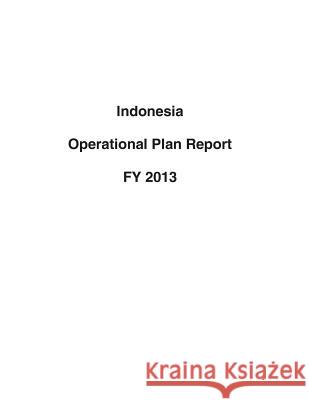Indonesia Operational Plan Report FY 2013 » książka
Indonesia Operational Plan Report FY 2013
ISBN-13: 9781503193628 / Angielski / Miękka / 2014 / 86 str.
Throughout most of Indonesia, HIV/AIDS remains a concentrated epidemic, with highest prevalence among high-risk groups of sex workers, intravenous drug users and transgender persons in medium and large cities and major ports in the world's largest archipelago. In the two provinces that make up Papua in the far eastern part of Indonesia, HIV/AIDS is a generalized epidemic, with a 2006 prevalence of 2.4%, although higher among the native Papuan population which accounts for about one half of those living in Papua. The 2011 integrated bio behavioral survey (IBBS) among high risk behavior groups in Indonesia found HIV prevalence to have declined among people who inject drugs (PWID) - primarily because PWID are increasingly switching to non-intravenous drugs; essentially remained unchanged among sex workers; and increased among trans-genders (waria) and high risk men, who are primarily thought to be clients of sex workers. While the prevalence among high risk men - including mobile men such as sailors, dock workers, and truck drivers - is still relatively low, the increase between the 2007 IBBS and 2011 IBBS is dramatic, rising from 0.1% in 2007 to 0.7 % in 2011. In 2012 PEPFAR/Indonesia also supported an IBBS among the Indonesian military. While the data is not fully analyzed there are clear indications that knowledge of HIV and of the importance of condoms is low and stigma of HIV/AIDS remains high. The Government of Indonesia (GOI) has had a progressive and comprehensive strategy and approach to combatting HIV/AIDS for several years. Led by the National AIDS Commission and the Ministry of Health (MOH), there are also presidential decrees supporting the fight against HIV/AIDS and active involvement and engagement of civil society, including from two of the most influential and largest religious NGO organizations in Indonesia (Nahdlatul Ulama (NU) and Muhammidyah). Among the Indonesian military, the Surgeon General's office is a key counterpart for PEPFAR/Indonesia. As one of a small group of external partners working in HIV/AIDS in Indonesia, PEPFAR/Indonesia works very closely with the GOI and civil society partners as well as with other key organizations involved in HIV including Australian AID (AusAID), the Joint United Nations Programme on HIV and AIDS (UNAIDS), the World Health Organization (WHO), the United Nations Children's Fund (UNICEF), the United Nations Office on Drugs and Crime (UNODC) and the Clinton Health Access Initiative (CHAI) (funded by AusAID). The Global Fund to Fight AIDS, Tuberculosis and Malaria (GFATM) is a major source of funding, contributing approximately 40% of total resources for HIV/AIDS. At the end of 2012, four principle recipients - including the MOH, National AIDS Commission (NAC), NU and the Indonesian Planned Parenthood Association (IPPA) had signed the Phase II of the 2009 GFATM grant for $100 million. USG staff were extensively involved in the development and finalization of the Phase II grant proposal.











